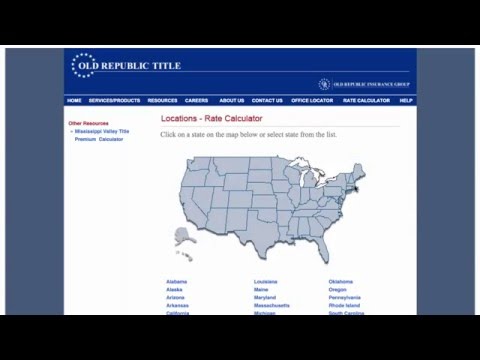Methods for Environmental Impact Assessment: Theory and Application Emphasis on Weighting-Scaling Checklists and Networks SpringerLink

It means that for 8 years in Italy EIA worked just for nine tipologies of projects, without any screening. The aim of this article is therefore to evaluate the EIA procedure when it has ended. To do this, the research uses as a study basis the set of regional deliberations that conclude each single procedure, collecting and classifying them. This article, analysing the case study, will address the questions about the quality of EIS, on project changes, duration of the process, the public involvement, and make some inferences about the final results of EIA, reasoning about the entire process of the evaluation. In some
countries, open public meetings are the most common technique to
enable public participation. However, the sort of open debate
engendered at such meetings is often both culturally alien and
unacceptable.
- The level
of consultation will vary depending on the type of plan or
project. - This means that participation is often conditioned by the NIMBY syndrome, that’s to say that the participation is limited to those directly interested by the proposals.
- Tools such
as maps, models and posters can help to illustrate points and
improve communication. - Actually, the Screening procedure in Italy requires the production of a preliminary EIS, for this reason it can be considered a “little EIA”.
Typically, costs vary from between 0.1 and 0.3
percent of the total project cost for large projects over US$ 100
million and from 0.2 to 0.5 percent for projects less than US$
100 million. For small projects the cost could increase to
between 1 and 3 percent of the project cost. •
Finally, an audit of the EIA process is carried out
some time after implementation. The datasets used and analyzed during the current study are available from the corresponding author on reasonable request. Moreover, EIA is a component that intervenes modifying the institutional and design attitude to the environment. It is a cultural change, integrated and supported by a wide range of policy initiatives and with amplifying effects in the social, cultural and institutional field.
Assessment of flood vulnerability in Bodva river basin, Slovakia
In this evaluation of Sardinia experiences, the paper has firstly focused on the state of art of EIA procedures. The GHK report (2010) underline how in 2010 in Italy there was not the information available about EIA procedures. The same report (pp 9–16) estimates (basing on correlation between population and average annual screening numbers) that Italy should be one of the nations that made more EIAs in Europe. It is not surprising because the proponents do not easily accept a failure of their proposal and try to have a positive result with additional information, project and EIS improvement and so on.
What are the 7 steps of EIA?
- Scoping. Establish the boundaries of the EIA, set the basis of the analyses that will be conducted at each stage, describe the project alternatives and consult the affected public.
- Impact Assessment & Mitigation.
- Impact Management.
- The EIA Report.
- Review & Licensing.
- Monitoring.
There are cases in which Sardinia has promulgated laws in contrast with the Italian ones, with some institutional clashes, and court processes, which sometimes took years to be resolved. Half of procedures involves projects of infrastructures, often promoted by public or semi-public proponent. The projects for infrastructures proposed by private subjects regards essentially waste treatment. The majority of projects (36) of the sector 2—Energy and extractive industries referred to little solar plants or wind farms while the rest (12/13) are essentially projects for mining research. We found 537 deliberations on EIA, and, after a first control, we selected 434 deliberations regarding EIAs.
Rate this article
In many cases, we found a lot of exchange of communications between CA and proponent before arriving at a negative result. Last, but not least, Sardinia is a special administrative Region and in some cases we found that conflicts between regional and national laws produced significant delays on EIAs. Therefore, Italian and Sardinian public bodies have still to work on the reduction of the duration of EIAs, for a better and effective result. In the case study it is noted that additional information is usually required, in fact it is evident that the 88% of the cases. This is the signal that this procedure enters deeply in the study of the impacts and it permits to improve the efficiency both of the procedure and of the projects. About the duration we can also report that the actual effectiveness of the EIA should be measured by comparing the total time required to obtain an authorization when there was no EIA with the current one.

By evaluating the results of previously studies on this topic (Sadler 1996; Wood and Jones 1997), it can be said that procedure effectiveness is improving over time. The methodology adopted to collect the data in this paper is exportable in other contexts. They are formal acts (deliberations) of a political authority that is normally mandatory to publish and make easily accessible. Their search and collection, in the absence of other official statistics, seems simpler than other methods (many studies collect all the materials regarding the EIAs, i.e. see Wood 1996).
Data Interpretation and Sufficiency.pdf
This procedural approach then is more devoted to fix a procedure which would define a method of investigation, requiring following a well-defined, procedurally specified course of action, rather than imposing a specific level of environmental protection (Lemons 1995). Many studies have investigated the correspondence between procedural prescriptions and real processes of EIA. Thus, they investigated on the scoping, screening and EIA stages, the EIS quality, referred to general methodology of eia rules fixed by the directives, and the public involvement. The great number of proposals on renewable sources for which EIA has been required underline, for us, a problem of effectiveness. If the legislation imposes a screening procedure, it means that these projects should have (on average) fewer impact on the environment. To request too often an EIA is like inserting them in the same list of those with more impact that is to have an ineffective normative application.
Specifically, on 24 analyzed proposals, 23 were related to the production of energy from renewable sources (11 wind farms, 11 solar parks, 1 parabolic trough power plant). It means that, in general, this category has been evaluated with potential relevant impact for the environment. Sardinia is a special administrative Region and it has to adapt its regional laws to the national ones, with a significant degree of freedom, that adds more difficulties and delays to the implementation of UE directives.
What are the objectives of methodologies in EIA?
Identifying, predicting, and evaluating economic, environmental, and social impacts of development activities. Providing information on the environmental consequences for decision making.


 English
English